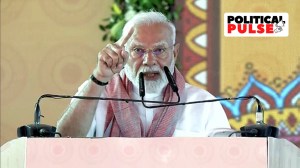EV adoption poses a financial risk for India’s leading automakers, power grid needs a reboot: Imperial College study
Alongside changes to the electricity grid, the researchers examined the impact of a rise in electric vehicle production on India’s car manufacturers
 The BEV experience across markets from Norway to the US and China shows the electric push works only if it is backed by state subsidies
The BEV experience across markets from Norway to the US and China shows the electric push works only if it is backed by state subsidiesThe increasing adoption of electric vehicles pose a financial risk to India’s leading automotive firms unless they can adapt to the change. The findings of a new report from London’s Imperial College Business School that focuses on how India’s automotive and industrial sectors need to prepare for the impact of EVs (essentially battery electric vehicles or BEVs), also refers to other second order effects of the transition.
Even if sales of electric vehicles rise to 25 per cent of all vehicles sold in India (up from around 8 per cent currently), there could be a financial risk to automotive companies who still rely on traditional car manufacturing for making profits. Also, if electric vehicles account for 25 per cent of all vehicles on the road in India, electricity usage in the country could rise by almost 60 per cent and would require significant upgrades to the electricity grid.
Meeting this target through coal power capacity risks cancelling out some of the climate benefits, so India’s electricity utilities would need to develop decarbonisation investment plans in advance, while meeting some of the increased demand through renewable sources. The cross-sector impact also includes soaring energy demand, according to the report, causing electricity demand in the transportation sector to increase by 59 per cent in 2030 from current levels. In addition, the researchers predict that as many as 6.7 million new charging points may be needed by 2030 to meet the demand for electric cars, which would require significant government and private sector investments. To help avoid overloading the grid, policy changes such as time-of-use tariffs may be required to incentivise charging at low-demand times.
“India has the opportunity to cut its carbon footprint substantially if large numbers of drivers move to electric vehicles, but there needs to be the right infrastructure and renewable energy capacity in place for the country and the climate to benefit,” said Alexandre Koberle, Honorary Senior Research Fellow at the Centre for Climate Finance and Investment at Imperial College Business School, who co-authored the report. “Doing nothing is not really an option for the big Indian automaker. Then there are also some second order effects of the transition, including the fact that India needs a 21st century grid,” Koberle told The Indian Express.
Government policies are targeting a 30 per cent EV adoption for private cars and up to 80 per cent for two- and three-wheelers by 2030, accelerating domestic EV manufacturing.
Automotive impact
Alongside changes to the electricity grid, the researchers examined the impact of a rise in electric vehicle production on India’s car manufacturers. They found this would be different for each of the country’s three largest producers: Maruti-Suzuki India, Mahindra and Mahindra (M&M) and Tata Motors. Tata motors control 70 per cent of the electric vehicle market while M&M has a 10 per cent share. India’s biggest carmaker Maruti Suzuki said in February that it is aiming to be the biggest producer, exporter and seller of EVs in the country, despite a delayed pivot to the BEV segment where it is yet to commence any sales.
As market leader, Tata would benefit from a rise in electric vehicle production, while M&M stands to be less significantly impacted, and Maruti-Suzuki faces significant cash flow risk unless it is able to boost its market share, the report said.
“These emerging risks could be mitigated by providing incentives for firms to increase their electric vehicle market share,” said Koberle. “One approach would be to offer sustainability-linked bonds – financial instruments linked to specific ESG goals. “For example, interest rate reductions could be offered for a company increasing its share of electric vehicle sales, and stricter repayment terms could be imposed for failing to expand charging infrastructure by an agreed proportion. This approach would help to align financial incentives and environmental goals, rather than the two pulling in opposite directions.”
Issues with India’s EV push
The BEV experience across markets from Norway to the US and China shows the electric push works only if it is backed by state subsidies.
The problem with this overt subsidisation of EVs, especially in the context of developing nations like India, is that much of the subsidy, especially the one offered as tax breaks for cars, ends up in the hands of the middle or upper middle classes, who are typically the buyers of battery electric four-wheelers.Then there is the argument that the well-to-wheel emission calculations show that the number of BEVs are comparable to for convention ICE vehicles.
Koberle said that while every new technology will need a subsidy push to achieve scale, there might be some merit in the well-to-wheel emission argument against BEVs.
There are other factors in the EV transition in India, including the charging network that needs to be put up. A World Bank analysis found that investing in charging infrastructure is 4-7 times more effective in EV adoption than providing upfront purchase subsidies. Norway and China have seen faster EV adoption through sustained efforts at expanding the public charging infrastructure, while also offering purchase subsidies. China, the leader in the number of publicly available chargers, accounts for 85 per cent of global fast chargers and 55 per cent slow chargers.
In India, the number of EVs had crossed 1 million by mid-2022, and is projected to grow to 45-50 million by 2030. But only about 2,000 public charging stations are currently operational across the country. Also, India’s charging infrastructure demands, according to KPMG’s ‘Electric vehicle charging — the next big opportunity’ report, is unique, because the vehicle mix is dominated by two- and three-wheelers. The charging network strategy has to be tweaked, given that the power requirement varies — 2Ws and 3Ws have small, low voltage batteries for which normal AC power charging is adequate, while 4Ws have varied battery sizes and use different charging standards. Single-phase AC chargers are suitable for cars with single-phase onboard chargers, while three-phase AC chargers are required for cars with larger onboard chargers.
There is also the question of electricity source. In several countries that have pushed EVs, much of the electricity is generated from renewables — Norway has 99 per cent hydroelectric power. In India, the grid is still fed largely by coal-fired thermal plants. Unless the generation mix changes significantly, India would be using fossil fuel generation to power EVs. Theoretically at least, this would mean reduced tailpipe emissions in the cities, but continuing pollution from the running of the thermal plant. There is the advantage of substitution of oil imports, though. There is also the value chain argument, as India struggles to make inroads into the global lithium value chain, there is discussion on the need to diversify the country’s dependency on Li-ion batteries in the EV mix. The demand for Li-ion batteries from India is projected to grow at a CAGR of more than 30 per cent by volume up to 2030, which translates to more than 50,000 tonnes of lithium requirement for the country to manufacture EV batteries alone. But more than 90 per cent of the global Li production is concentrated in Chile, Argentina, and Bolivia alongside Australia and China, and other key inputs such as cobalt and nickel are mined in the Congo and Indonesia — India would, therefore, be almost entirely dependent on imports from a small pool of countries to cater to its demand. While other options to Li-ion are being explored, viability remains a key factor.
Must Read
Buzzing Now



Apr 24: Latest News
- 01
- 02
- 03
- 04
- 05























